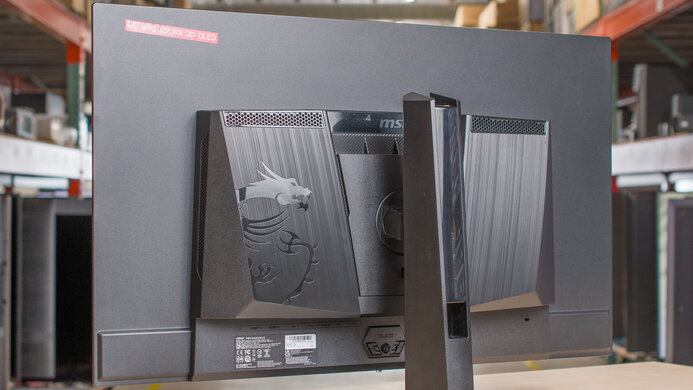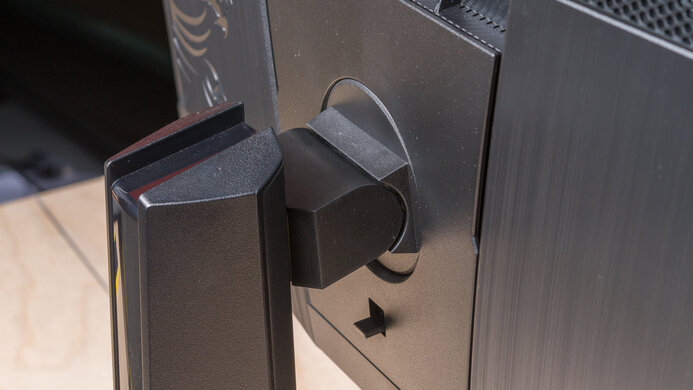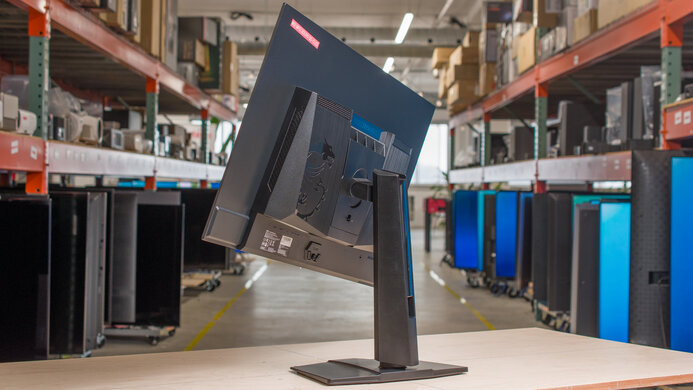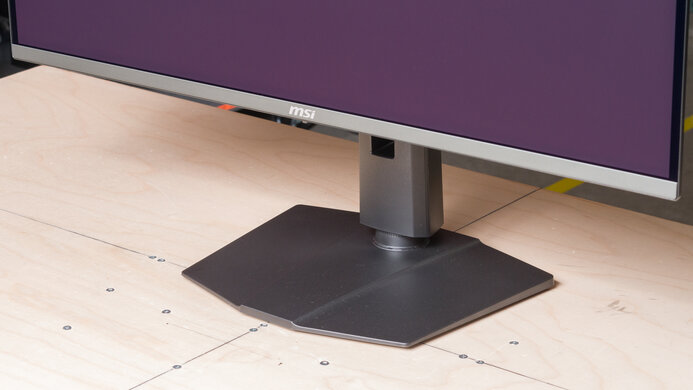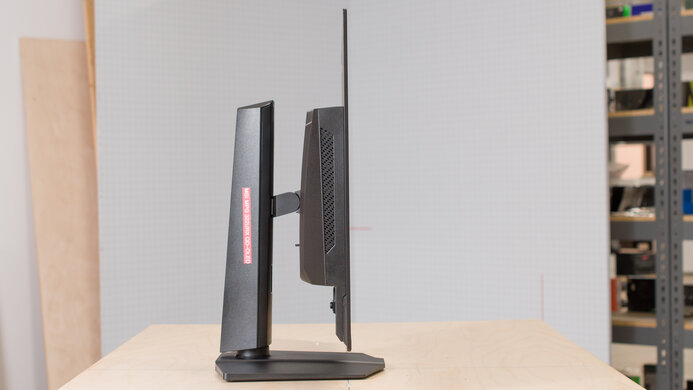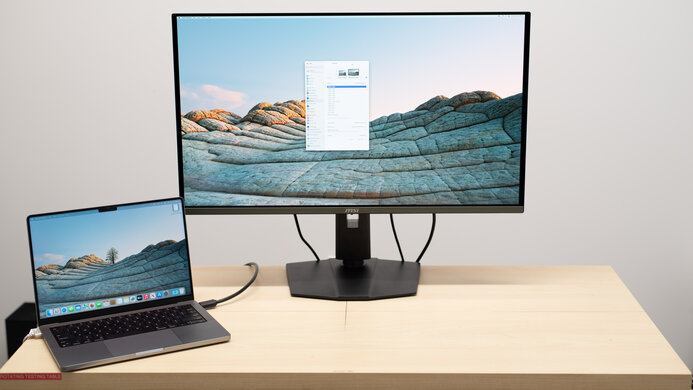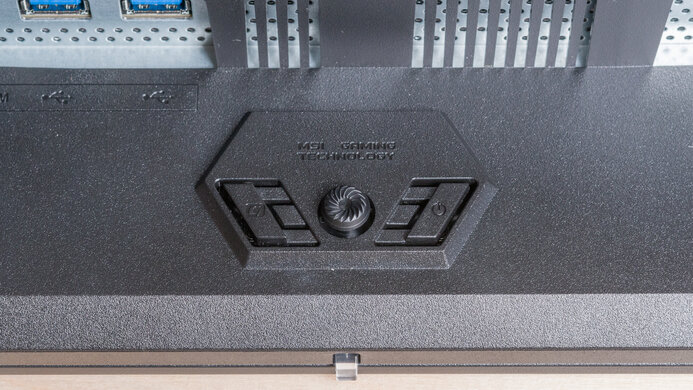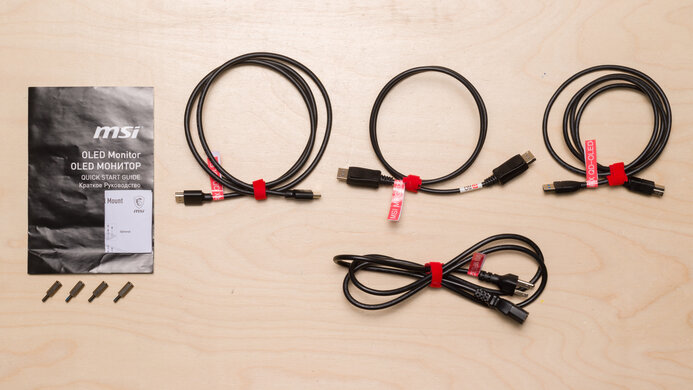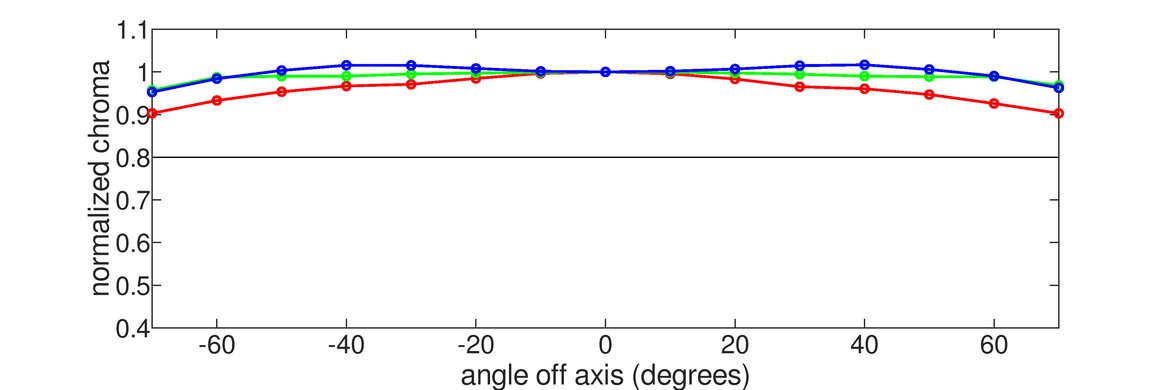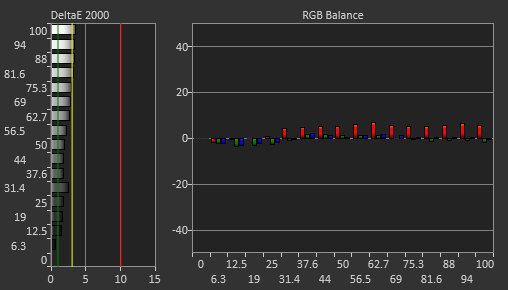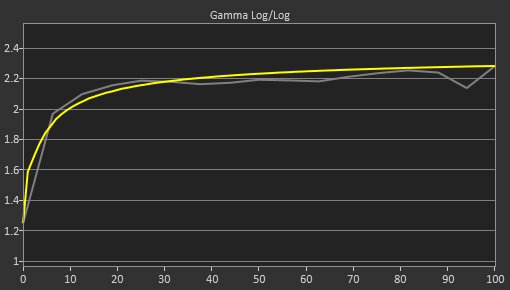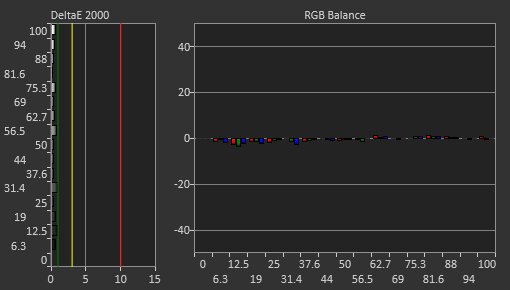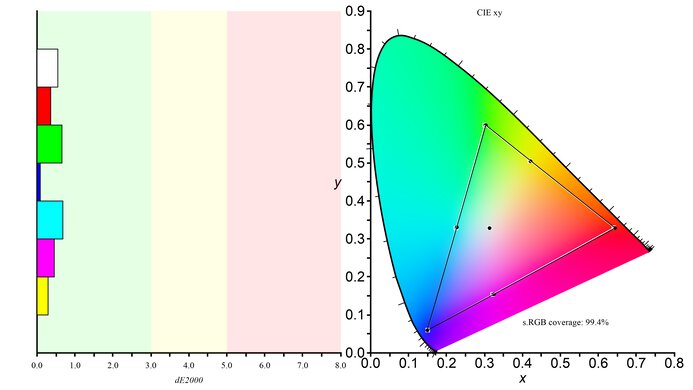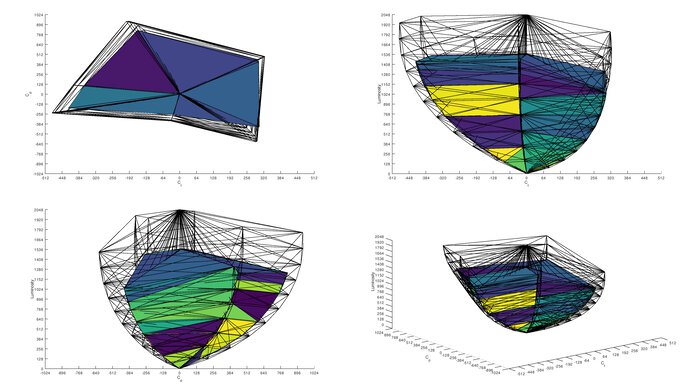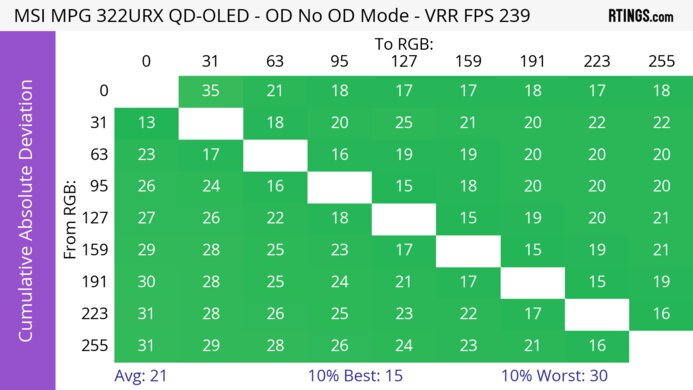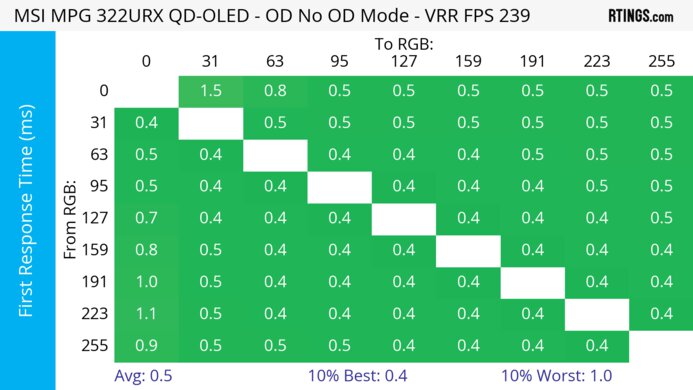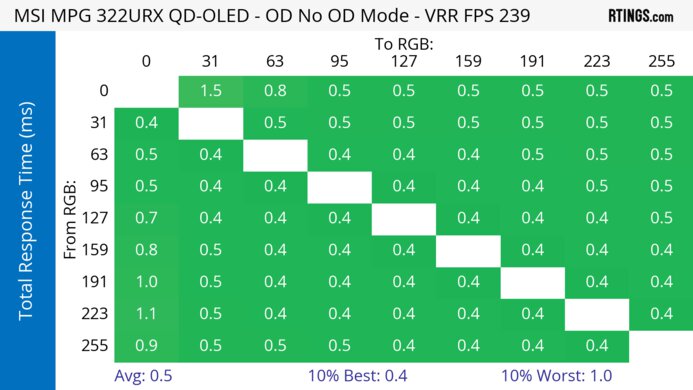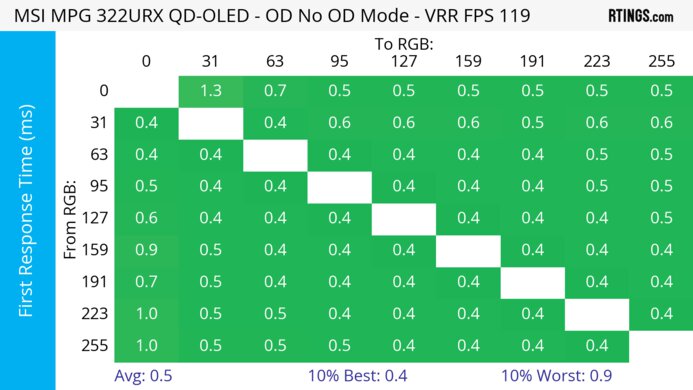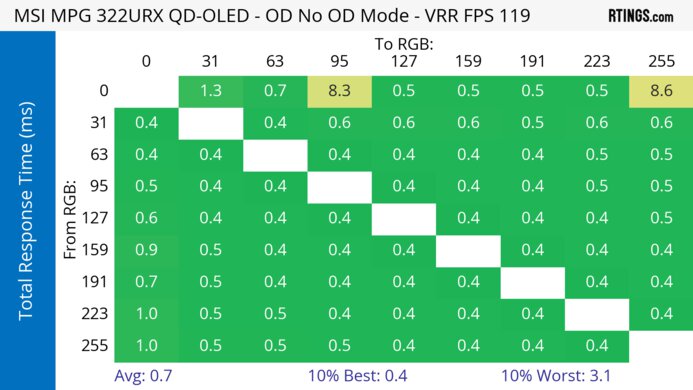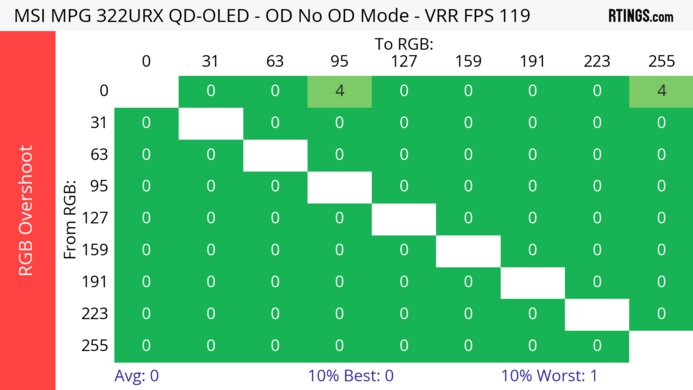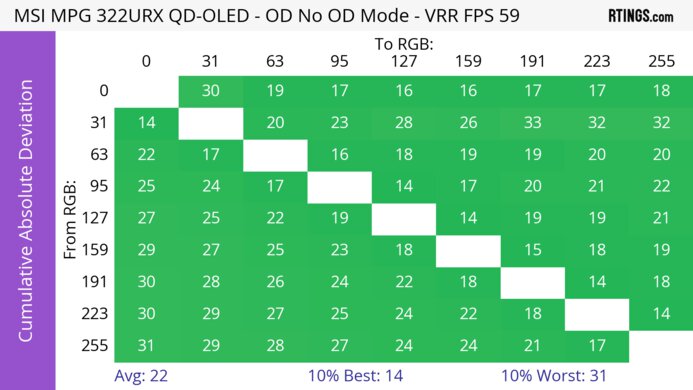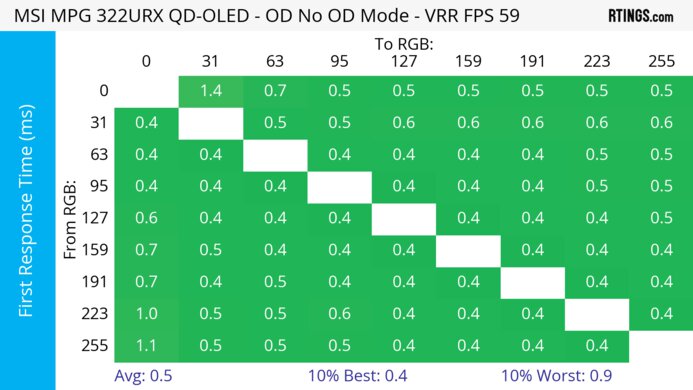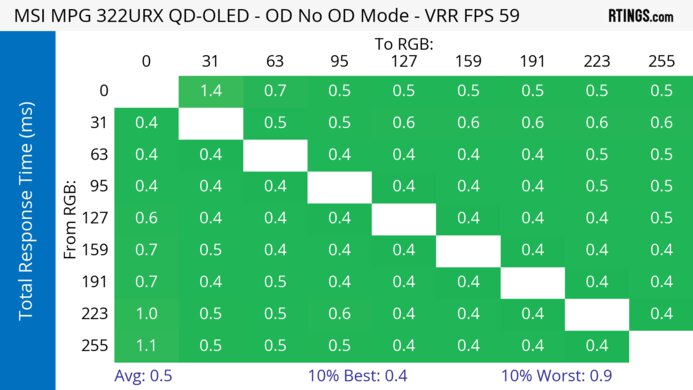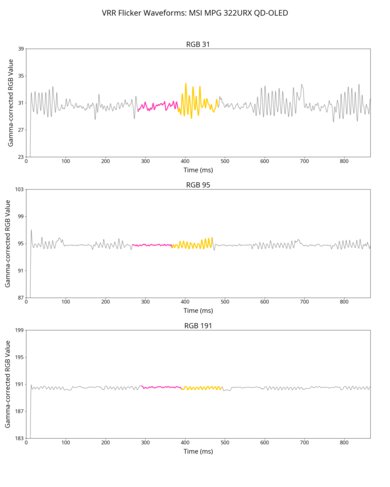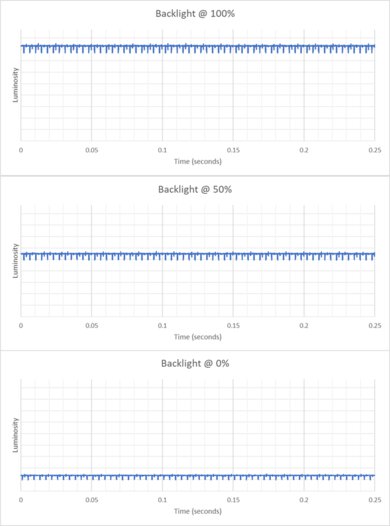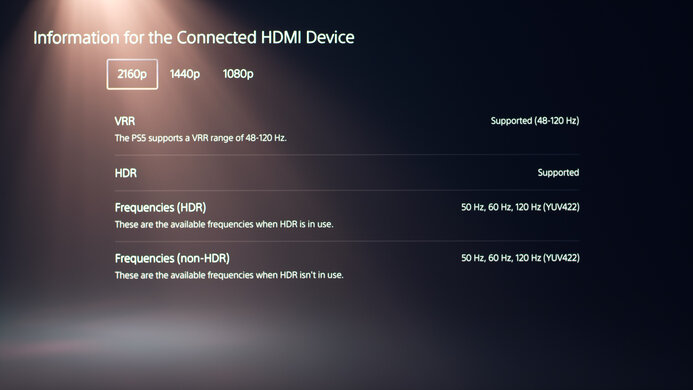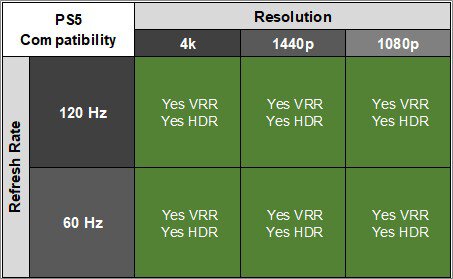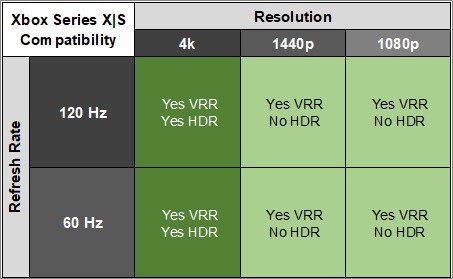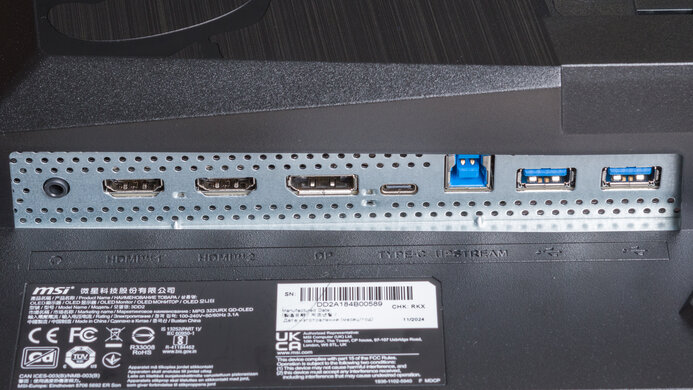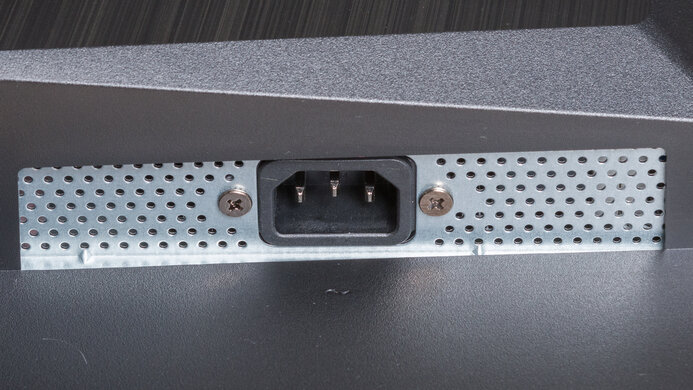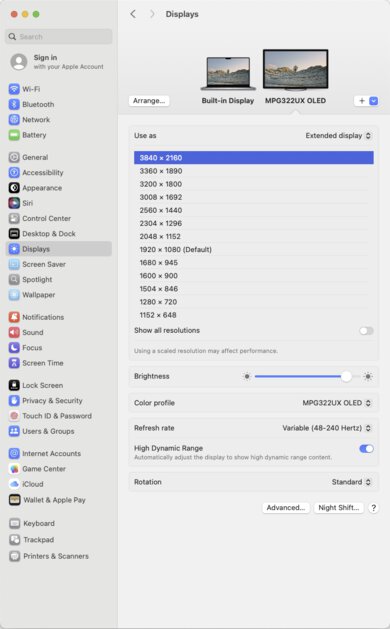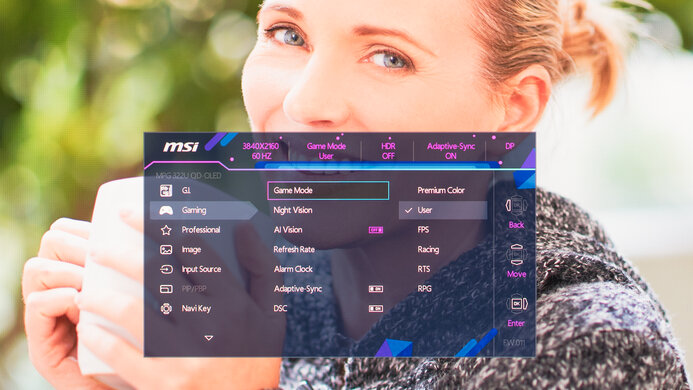The MSI MPG 322URX QD-OLED is a premium 32-inch 4k gaming monitor with a 240Hz refresh rate. It competes with other 32-inch QD-OLEDs such as the ASUS ROG Swift OLED PG32UCDM, the Gigabyte AORUS FO32U2P, and the Samsung Odyssey OLED G80SD S32DG80, and is a follow-up to the popular MSI MPG 321URX QD-OLED. Like the 321URX, it has a custom heatsink, KVM switch, and Mystic RGB lighting. However, the 322URX adds some additional features, such as UHBR20 DisplayPort 2.1 bandwidth, official G-SYNC Compatible VRR support, and higher (98W) power delivery over USB-C.
Our Verdict
The MSI MPG 322URX is fantastic for PC gaming. It has outstanding contrast and displays deep blacks in a dark room. It also gets bright enough for smaller highlights to pop, though larger ones don't. It also has a very fast response time and low input lag, so games look crisp and feel responsive. Finally, it displays a wide range of colors quite vividly, so content looks engaging.
-
Near-instantaneous response time.
-
Displays deep blacks in a dark room.
-
240Hz refresh rate.
-
Vivid colors.
-
UHBR20 DisplayPort 2.1 bandwidth.
-
Very low input lag at max refresh rate.
-
Lots of ambient light causes deep blacks to look purple.
The MSI MPG 322URX is superb for console gaming. Its colors are vivid and rich, and it fully supports HDR, with small highlights that pop. It also supports VRR with both consoles for smoother motion, and its fantastic response time ensures fast-moving objects look crisp. Additionally, it has low input lag at 120Hz. However, while its input lag at 60Hz is good, it's not as responsive as some monitors at this refresh rate.
-
Near-instantaneous response time.
-
Displays deep blacks in a dark room.
-
Vivid colors.
-
HDMI 2.1 bandwidth.
-
Lots of ambient light causes deep blacks to look purple.
The MSI MPG 322URX is good for office work, with some caveats. Its large screen makes multitasking easier, and it has excellent text clarity. It also swivels and has fantastic viewing angles, so it's easy to share your screen with someone else. Additionally, it's bright enough for you to see the screen easily in an average room, though it's not bright enough to fight bright glare. That said, it has a risk of permanent burn-in with constant exposure to the same static elements over time, such as if you're regularly using productivity programs with task bars in the same place.
-
Bright enough to fight glare in most rooms.
-
KVM switch and at least 90W USB-C charging.
-
Sharp text and image clarity.
-
Risk of burn-in.
The MSI MPG 322URX is remarkable for editing. It displays a wide range of colors with excellent detail and accuracy, and you don't need to calibrate it for an accurate SDR image. It also displays deep blacks in a dark room, though like other QD-OLEDs, black levels rise and appear purple in rooms with a lot of ambient light. Additionally, there's a risk of permanent burn-in with constant exposure to the same static elements over time, such as if your editing programs and toolbars are always in the same place on the screen.
-
Displays deep blacks in a dark room.
-
Vivid colors.
-
Bright enough to fight glare in most rooms.
-
KVM switch and at least 90W USB-C charging.
-
Sharp text and image clarity.
-
Very accurate sRGB mode.
-
Lots of ambient light causes deep blacks to look purple.
-
Risk of burn-in.
While the MSI MPG 322URX gets bright enough to be easily seen in a typical room, it can't overcome glare from bright light sources. Additionally, while small highlights pop, larger highlights don't.
-
Bright enough to fight glare in most rooms.
-
Small highlights pop in HDR.
-
Larger highlights are dimmer.
The MSI MPG 322URX has a very fast response time, and motion looks very crisp.
-
Near-instantaneous response time.
-
Fantastic refresh rate compliance.
The MSI MPG 322URX is superb for HDR. There's no blooming around bright objects, and it displays a wide range of colors quite vividly. It also displays deep blacks in a dark room, though deep blacks appear purple in a room with a lot of ambient light.
-
Displays deep blacks in a dark room.
-
Vivid colors.
The MSI MPG 322URX has remarkable SDR picture quality. It displays a wide range of colors as well as deep blacks in a dark room.
-
Displays deep blacks in a dark room.
-
Vivid colors.
The MSI MPG 322URX's color accuracy is exceptional. It's fantastically accurate before calibration, and displays a consistent, uniform image across the entire screen.
-
Very accurate sRGB mode.
- 9.0 PC Gaming
- 9.3 Console Gaming
- 7.5 Office
- 9.1 Editing
Performance Usages
- 6.7 Brightness
- 9.7 Response Time
- 9.3 HDR Picture
- 9.9 SDR Picture
- 9.1 Color Accuracy
Changelog
-
Updated Jun 13, 2025:
We updated text throughout to match the new and updated tests with Test Bench 2.1, including in the Verdict section.
- Updated Jun 13, 2025: We've converted this review to Test Bench 2.1. This includes new tests for Direct Reflections, Ambient Black Level Raise, and Total Reflected Light. You can see all the changes in the changelog.
-
Updated Mar 21, 2025:
Added that the ASUS ROG Swift OLED PG27UCDM is a smaller QD-OLED with better Text Clarity.
- Updated Mar 05, 2025: We've converted this review to Test Bench 2.0.1. This includes a new test result for DisplayPort 2.1 Transmission Bandwidth.
-
Updated Mar 04, 2025:
Corrected text to note that Input Lag is slightly reduced at lower refresh rates when DSC is off.
Check Price
Differences Between Sizes And Variants
We tested the 32-inch MSI MPG 322URX, which is the only size available. However, it's one of several very similar models in MSI's lineup. You can see the differences between these models below, though the results are only valid for this monitor.
| Model | Size | Panel Type | Power Delivery | DisplayPort Version | KVM Switch |
|---|---|---|---|---|---|
| MPG 322URX QD-OLED | 32" | Flat QD-OLED | 98W | 2.1 (UHBR20) | Yes |
| MPG 321CURX QD-OLED | 32" | Curved QD-OLED | 98W | 1.4 | Yes |
| MPG 321URX QD-OLED | 32" | Flat QD-OLED | 90W | 1.4 | Yes |
| MAG 321UPX QD-OLED | 32" | Flat QD-OLED | 15W | 1.4 | No |
Our unit's label indicates it was manufactured in November 2024. We tested it on firmware FW.011.
Compared To Other Monitors
The MSI MPG 322URX is a premium 32-inch QD-OLED gaming monitor. Even compared to other 32-inch QD-OLEDs, it delivers a premium experience, as it has a KVM switch and UHBR20 bandwidth, which eliminates the need to use Display Stream Compression (DSC) to reach the monitor's max refresh rate. One of its closest competitors, the Gigabyte AORUS FO32U2P, costs less and also has UHBR20 bandwidth, but it delivers less power over USB-C. Additionally, if you don't mind using DSC (and in many cases, the difference isn't noticeable), the 322URX's predecessor, the MSI MPG 321URX QD-OLED, delivers very similar performance at a lower cost. That said, if you're looking for a premium gaming monitor that has it all, the 322URX is a fantastic choice.
Also, be sure to check out our recommendations for the best OLED monitors, the best gaming monitors, and the best HDR gaming monitors.
The Gigabyte AORUS FO32U2P and the MSI MPG 322URX QD-OLED are both 32-inch 4k 240Hz QD-OLED gaming monitors. Both monitors have very similar performance and UHBR20 support, and for most people the better option is whichever one you can find cheaper. However, if you're gaming in a brighter room, the Gigabyte is a better option, as it gets brighter in SDR. However, the MSI is a better option if you're connecting a laptop that draws lots of power, as it delivers much more power over USB-C.
The ASUS ROG Swift OLED PG32UCDM and the MSI MPG 322URX QD-OLED are 4k 32-inch 240Hz QD-OLED gaming monitors. While both have very similar performance, the ASUS is a better option if you're in a brighter room, as it gets much brighter in SDR. However, the MSI is a better option if you don't want to use DSC, as it has UHBR20 bandwidth and reaches its max refresh rate without any compression.
The 32-inch MSI MPG 322URX QD-OLED is a newer version of the MSI MPG 321URX QD-OLED. Both target gamers and have a 240Hz refresh rate, a KVM switch, and extremely similar overall performance. If you don't want to use DSC to reach the monitor's maximum refresh rate or are looking for official G-SYNC compatible VRR support, the 322URX is the better option. However, if you don't need these features, the 321URX provides a nearly identical experience and is a great choice if you can find it for less.
The MSI MPG 322URX QD-OLED and the ASUS ROG Swift OLED PG27UCDM are both 4k, 240Hz QD-OLED gaming monitors. They have many of the same features, including DisplayPort 2.1 bandwidth at UHBR20 speeds, but the ASUS also supports Dolby Vision, which the MSI doesn't. That said, the main difference between the two is the size. Although this is ultimately a personal preference, the ASUS has higher pixel density with better text clarity.
The Dell Alienware AW3225QF and the MSI MPG 322URX QD-OLED are 32-inch 240Hz QD-OLED gaming monitors. Both have very similar performance, and the biggest difference between them is that the Dell has a curved screen, and is a better choice if you prefer this. However, the MSI is a better option if you prefer a flat screen or want a monitor with a KVM switch and at least 90W of power delivery over USB-C.
The Samsung Odyssey OLED G80SD S32DG80 and the MSI MPG 322URX QD-OLED are 240Hz 32-inch 4k QD-OLED gaming monitors. While both offer very similar performance, the Samsung is the better choice if you want to use your monitor as a TV, as it has a smart OS and a remote. Unlike the MSI, it also has a matte screen, so it has fewer direct reflections. It also has slightly better text clarity. However, if connectivity is important to you, then the MSI is a better option, as it has a KVM switch and delivers at least 90W of power over USB-C. It also doesn't require DSC to reach its maximum refresh rate.
The MSI MPG 322URX QD-OLED and the BenQ MOBIUZ EX321UX are 32-inch 4k gaming monitors. The BenQ is a better option if you plan on using your monitor for work quite a bit, as it has no risk of burn-in, sharper text, and is far better at overcoming glare. The MSI is a better option if you plan to do mostly gaming, as it has far better motion handling, a higher refresh rate, and much better contrast in a dark room.
Test Results
The ergonomics are okay. You can make any common adjustment for horizontal use, though its swivel range is limited. The stand features a cutout for cable management. You can also detach the monitor from the stand and connect a VESA mount.
The MSI MPG 322URX doesn't have a backlight, so it doesn't require a local dimming feature. However, with a near-infinite contrast ratio, there isn't any blooming around bright objects, and it's the equivalent of a perfect local dimming feature. We still film these videos on the monitor so you can see how the screen performs and compare it with a monitor that has local dimming.
Settings
- Game Mode: User (after calibration)
- Pro Mode: User (after calibration)
- Brightness: 100
- Pixel Shift: Slow
- Static Screen Detection: Off
- Multi Log Detection: Off
- Taskbar Detection: Off
- Boundary Detection: Off
The SDR brightness is fair. While it can't overcome glare from a bright window, it's easy to see in a room with a moderate amount of light. However, the monitor has consistent brightness, which is helpful for tasks requiring consistent brightness, such as photo editing.
Settings
- Game Mode: User
- Pro Mode: User
- DisplayHDR: Peak 1000 nits
- Brightness: Locked
- Pixel Shift: Slow
- Static Screen Detection: Off
- Taskbar Detection: Off
- Boundary Detection: Off
The HDR brightness is alright. Small highlights pop against the rest of the image, but larger ones are more muted. Additionally, while it follows the PQ EOTF target curve well, it has a slow roll-off near peak brightness, so highlights don't get as bright as possible.
If you set DisplayHDR to 'True Black 400, ' brightness is reduced at both a 2% window (453 cd/m²) and a 100% window (253 cd/m²). The PQ EOTF also has a more gradual roll-off.
Note: We tested the 322URX with a newer version of Calman than the MSI MPG 321URX QD-OLED, so the numbers on the EOTF graph are different. However, the scale is still the same, and you can compare the 322URX's EOTF curve to the 321URX's.
The horizontal viewing angle is incredible. Although it technically isn't perfect, you visually won't see any inconsistencies when viewing from the sides or if you sit close to the screen.
The vertical viewing angle is fantastic. You won't notice any inconsistencies as you view the screen from the top or bottom.
The accuracy before calibration in the 'sRGB' Pro Mode is fantastic. Its white balance is great and its color accuracy is excellent. Additionally, its color temperature is close to the 6500K target. Gamma follows the target quite well, though very bright parts of scenes are a bit too bright.
Locked-out Settings
Using the sRGB mode locks out the following settings:
- Contrast
- Low Blue Light
- Color Temperature
If you want to access these settings, then you need to use another mode with worse accuracy, like 'User.'
The accuracy after calibration is superb, and you won't notice any inaccuracies.
The HDR color gamut is outstanding. It displays virtually all colors in the commonly-used DCI-P3 color space, as well as a wide range in Rec. 2020. Additionally, it's quite accurate in both spaces, though white is slightly inaccurate in Rec. 2020.
The color volume is excellent. It displays bright colors vividly, and darker colors look accurate in a dark room. However, in bright rooms very dark colors lose saturation, and don't look as dark as on WOLED displays.
The text clarity is amazing. Enabling Windows ClearType (top photo) improves the boldness of letters. These photos are in Windows 10, and you can also see them in Windows 11 with ClearType on and with ClearType off.
Due to the triangular subpixel layout, there's some color fringing around letters and at the edge of windows. It's hard to see unless you look closely at the monitor. Some people notice this more than others. You can also check out the 27-inch ASUS ROG Swift OLED PG27UCDM if you want better text clarity, as the higher pixel density results in less fringing.
The direct reflection handling is decent. As it has a glossy coating, bright light bounces off like a mirror, but it doesn't have too much glare either.
This monitor has distracting black level raise in bright rooms. Blacks look purple, like on any QD-OLED, mainly due to the fact that it lacks a polarizer. This means that it only displays perfect blacks in a dark room.
This monitor is capable of reaching its maximum refresh rate over DisplayPort without using DSC (Display Stream Compression) if your graphics card supports UHBR20 (80Gbps) bandwidth. However, you need to use DSC to reach its maximum refresh rate over HDMI, but it has a setting to disable DSC if you prefer.
| NVIDIA - G-SYNC Compatibility | ||
|---|---|---|
| Connection | VRR Min | VRR Max |
| DisplayPort | <20Hz | 240Hz |
| HDMI | <20Hz | 240Hz |
| AMD - FreeSync | ||
|---|---|---|
| Connection | VRR Min | VRR Max |
| DisplayPort | <20Hz | 240Hz |
| HDMI | <20Hz | 240Hz |
In addition to FreeSync and G-SYNC compatibility, this monitor also supports HDMI Forum VRR.
| Frame Rate | CAD Heatmap | RT Chart | Pursuit Photo |
|---|---|---|---|
| 239 | Heatmap | Chart | Photo |
| 165 | Heatmap | Chart | Photo |
| 144 | Heatmap | Chart | Photo |
| 120 | Heatmap | Chart | Photo |
| 100 | Heatmap | Chart | Photo |
| 80 | Heatmap | Chart | Photo |
| 60 | Heatmap | Chart | Photo |
The MSI MPG 322URX has remarkable motion handling across its VRR range. There's minimal blur or smearing with fast-moving objects, and it remains consistent as the refresh rate drops. Any blur at low refresh rates is persistence blur.
The refresh rate compliance is superb. It makes full-color transitions before drawing the next frame because of its near-instantaneous response time.
This monitor doesn't have a black frame insertion feature to reduce persistence blur.
The input lag is very low at its max refresh rate. However, input lag increases a bit more than expected at lower refresh rates. These results are with DSC 'On.'
If DSC is 'Off,' the input lag is slightly reduced at lower refresh rates, as you can see below:
| Refresh Rate | Input Lag (ms) |
|---|---|
| 240Hz | 2.7 |
| 120Hz | 6.6 |
| 60Hz | 15.0 |
You can connect the monitor to your laptop via USB-C, charging it with at least 90W of power, while also displaying an image on the monitor.
MSI lists this monitor's maximum power delivery at 98W, but our testing device only draws a maximum of 90W, so we can't confirm the monitor's maximum power delivery.
| Connection | HDMI 2.0 | HDMI 2.1 | USB-C |
|---|---|---|---|
| Max Refresh Rate | 60Hz | 240Hz |
|
| VRR Range | N/A | 48-240Hz |
|
| HDR | Yes | Yes | Yes |
The MSI MPG 322URX works well with macOS. VRR works well, though HDR colors look oversaturated. If you're using a MacBook, closing the lid doesn't cause the computer to go to sleep, and windows migrate from the MacBook's screen to the MSI. Opening the lid again returns windows to their original position. Additionally, waking the MacBook from sleep returns windows to their pre-sleep location.
This monitor has some extra features designed for gamers, such as:
- Mystic Light: A soft ambient light that you can sync with other Mystic Light products.
- AI Crosshair: Overlays a crosshair that changes color to stand out on the screen, even with changing content.
- AI Vision: Enhances the visibility of detail in dark areas as well as optimizing contrast and color saturation.
- Gaming Intelligence App: Allows you to adjust monitor settings with your keyboard and mouse rather than the 5-way joystick control on the monitor.
It also has a KVM switch, which makes it easy to switch between sources and use the same keyboard and mouse connected to the monitor.
OLED Care
Like other OLED panels, this monitor has a few settings to help mitigate the risk of permanent burn-in when exposed to the same static elements over time.
- Taskbar Detection: Reduces the brightness of taskbars if they're detected.
- Boundary Detection: Reduces the brightness of boundary areas such as pillars and vertical lines.
- Pixel Shift: Moves the image a few pixels at a time so that each pixel isn't always displaying the same thing. You can set it to 'Slow,' 'Normal', or 'Fast'.
- Multi Logo Detection: Reduces the brightness of static elements, like logos, that stay on the screen for a long time.
- Panel Protect: Activates a pixel refresh cycle to reduce the risk of permanent burn-in. A message pops up every four hours of usage to run the cycle, which takes a couple of minutes to complete. However, the message can pop up at any time, including while you're gaming. You can adjust the feature to activate after 16 hours instead of 4, though this may make your screen more prone to burn-in.
You can find more information about the monitor's OSD in the User Guide.
Comments
MSI MPG 322URX QD-OLED: Main Discussion
Let us know why you want us to review the product here, or encourage others to vote for this product.
- 21010
I’m comparing the OD Transition plots between the 322URX and the 321URX. Is there an actual improvement or did you just update the way you apply smoothing? Also, could you comment on the Image Flicker plots? Looks like the 322URX does slightly better here.
Hi, I just wanted to add that we haven’t changed the way we test response time between the time we tested the 321URX and the 322URX, so any differences you’re seeing in the OD transition plots are from differences in the data.
- 21010
I’m comparing the OD Transition plots between the 322URX and the 321URX. Is there an actual improvement or did you just update the way you apply smoothing? Also, could you comment on the Image Flicker plots? Looks like the 322URX does slightly better here.
Hi, thanks for your questions. The luminosity scale in our image flicker chart isn’t consistent between monitors, so you can’t compare brightness fluctuations between different monitors. You can learn more about how we test this in our image flicker test article. We’re looking into the OD transition plots, we’ll get back to you shortly on that.
- 21010
I’m comparing the OD Transition plots between the 322URX and the 321URX. Is there an actual improvement or did you just update the way you apply smoothing? Also, could you comment on the Image Flicker plots? Looks like the 322URX does slightly better here.
Edited 1 month ago: spelling Update: We updated text throughout to match the new and updated tests with Test Bench 2.1, including in the Verdict section.
- 21010
Hello Together,sorry for my bad english,longtime ago. i want a27/28 or 32 4k oled monitor. but often 60hz input lag high,why? at this monitor new firmware and inpt lag now smoother? Which monitor is under 10m/s by 60 hz?1 i Hope you understand my question.
- 21010
Is the screen as delicate and prone to scratches are people say or is this blown out of proportion?
We’ve just released a new video that mentions the MSI MPG 322URX QD-OLED here.



